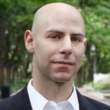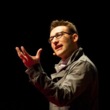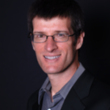Decoding greatness: how the best in the world reverse engineer success
Description
More Details
Similar Titles From NoveList
Similar Authors From NoveList
Published Reviews
Booklist Review
Friedman's formula for greatness is deceptively simple: find something great, then take it apart. But deconstruction is just the first step, and he uses examples of entrepreneurs, writers, musicians, chefs, athletes, and more to illustrate the rest of the process. First, look for formulas and patterns that can be replicated. Creative thinking outweighs originality, but evolving ideas outweigh simply copying. Keep meaningful metrics in the creation stage (how long should be spent on each component) and in the constant improvement stage (which sometimes means looking outside for inspiration, like Barack Obama improving his public speaking by listening to Black preachers). Taking risks for the sake of risks is not smart; instead, use small experiments or even a pseudonym to stretch. Friedman also suggests the best ways to get the best advice from experts--and it's not by taking a class. There are plenty of stories mixed in to illustrate each point clearly, and readers will leave the book inspired to start something great themselves.
Publisher's Weekly Review
To replicate a successful formula one needs to take it apart, see how it works, and improve upon it, psychologist Friedman (The Best Place to Work) advises in this empowering guide. Engineers, he writes, have long known that "systematically taking things apart to explore their inner workings and extract new insights" is an excellent way to create new products. Expanding on this idea, Friedman discusses how artists, chefs, athletes, and other professionals can use the process of reverse engineering to acquire new skills and spark creativity. He walks readers through examples of using data mining and analysis to spot patterns in such areas as a good TED talk, blockbuster superhero movies, and record-breaking sports performances. An appendix with 10 strategies for readers to apply to their work contains such practical tips as "become a collector" of inspiration, "think in blueprints" to identify patterns, and "don't mimic, evolve." While the central concept isn't particularly innovative, Friedman's tips will nonetheless inspire readers to learn from what they admire. Those in need of a refresh of their problem-solving skills should give this a look. Agent: Lucinda Blumenfeld, Lucinda Literary. (June)
Library Journal Review
Reverse engineering involves analyzing an appealing product or service to discover the patterns or formulae that were used to develop it. Psychologist Friedman (The Best Place To Work) here identifies reverse engineering as the way to "analyze the works of others and distill their approach into a reproducible formula"--not the same thing as mere copying because the reverse engineer is looking for "the right formula for the right person within the right context." Friedman's book, through many examples, identifies techniques of reverse engineering. One technique discussed at length is the use of a performance scoreboard to measure key behaviors identified through reverse engineering, which allows the individual or organization using the scoreboard to improve its performance. Friedman makes the case that reverse engineering often results in the acquisition or improvement of skills. He effectively balances theory with his rich collection of real-life examples, thus avoiding clichés and vague aspirations. VERDICT A practical and sophisticated handbook, useful for readers who wish to learn from the successful experiences of others and effectively apply the lessons to their own work and careers.--Shmuel Ben-Gad, Gelman Lib., George Washington Univ., Washington, DC
Kirkus Book Review
Don't quit your day job just yet, but do prepare to "harness the future and the past" to change the world and make yourself a superstar. Friedman opens with a well-known moment in the history of technology: when Steve Jobs called out Bill Gates for supposedly stealing Apple's software to build Windows. "I think it's more like we both had this rich neighbor named Xerox," Gates coolly replied, "and I broke into his house to steal the TV set and found that you had already stolen it." True enough, but even as Xerox snoozed, both Jobs and Gates had reverse-engineered their inventions from the Xerox original, "systematically taking things apart to explore their inner workings and extract new insights." Though Friedman's definition of reverse-engineering gets more metaphorical as the narrative proceeds, his fundamental lesson holds: If you want to be a novelist, you pick apart the work of eminent models to figure out their tricks; if you want to be a musician, you try to learn to think like Paul McCartney. Whatever the pursuit, writes the author, the race is on, since if you're alive and working, you're "facing significantly more competition than your colleagues did a decade back." Greatness, Friedman holds, hinges on the mind, both creative and detail-oriented, that can see what someone else has done and do it better--or do something that the other thing does not. Drawing on examples from Jeff Bezos to Judd Apatow, Malcolm Gladwell, and Vincent Van Gogh (women, regrettably, don't often figure in Friedman's pages), the author examines how these creative minds think and counsels readers to ask interesting questions, solicit and interpret feedback (but not too much, since "feedback is valuable, but only to a point"), develop meaningful metrics, and set goals. A meandering yet mostly engaging prescription for getting ahead in business and life. Copyright (c) Kirkus Reviews, used with permission.
Booklist Reviews
Friedman's formula for greatness is deceptively simple: find something great, then take it apart. But deconstruction is just the first step, and he uses examples of entrepreneurs, writers, musicians, chefs, athletes, and more to illustrate the rest of the process. First, look for formulas and patterns that can be replicated. Creative thinking outweighs originality, but evolving ideas outweigh simply copying. Keep meaningful metrics in the creation stage (how long should be spent on each component) and in the constant improvement stage (which sometimes means looking outside for inspiration, like Barack Obama improving his public speaking by listening to Black preachers). Taking risks for the sake of risks is not smart; instead, use small experiments or even a pseudonym to stretch. Friedman also suggests the best ways to get the best advice from experts—and it's not by taking a class. There are plenty of stories mixed in to illustrate each point clearly, and readers will leave the book inspired to start something great themselves. Copyright 2021 Booklist Reviews.
Library Journal Reviews
Reverse engineering involves analyzing an appealing product or service to discover the patterns or formulae that were used to develop it. Psychologist Friedman (The Best Place To Work) here identifies reverse engineering as the way to "analyze the works of others and distill their approach into a reproducible formula"—not the same thing as mere copying because the reverse engineer is looking for "the right formula for the right person within the right context." Friedman's book, through many examples, identifies techniques of reverse engineering. One technique discussed at length is the use of a performance scoreboard to measure key behaviors identified through reverse engineering, which allows the individual or organization using the scoreboard to improve its performance. Friedman makes the case that reverse engineering often results in the acquisition or improvement of skills. He effectively balances theory with his rich collection of real-life examples, thus avoiding clichés and vague aspirations. VERDICT A practical and sophisticated handbook, useful for readers who wish to learn from the successful experiences of others and effectively apply the lessons to their own work and careers.—Shmuel Ben-Gad, Gelman Lib., George Washington Univ., Washington, DC
Copyright 2021 Library Journal.PW Annex Reviews
To replicate a successful formula one needs to take it apart, see how it works, and improve upon it, psychologist Friedman (The Best Place to Work) advises in this empowering guide. Engineers, he writes, have long known that "systematically taking things apart to explore their inner workings and extract new insights" is an excellent way to create new products. Expanding on this idea, Friedman discusses how artists, chefs, athletes, and other professionals can use the process of reverse engineering to acquire new skills and spark creativity. He walks readers through examples of using data mining and analysis to spot patterns in such areas as a good TED talk, blockbuster superhero movies, and record-breaking sports performances. An appendix with 10 strategies for readers to apply to their work contains such practical tips as "become a collector" of inspiration, "think in blueprints" to identify patterns, and "don't mimic, evolve." While the central concept isn't particularly innovative, Friedman's tips will nonetheless inspire readers to learn from what they admire. Those in need of a refresh of their problem-solving skills should give this a look. Agent: Lucinda Blumenfeld, Lucinda Literary. (June)
Copyright 2021 Publishers Weekly Annex.




























